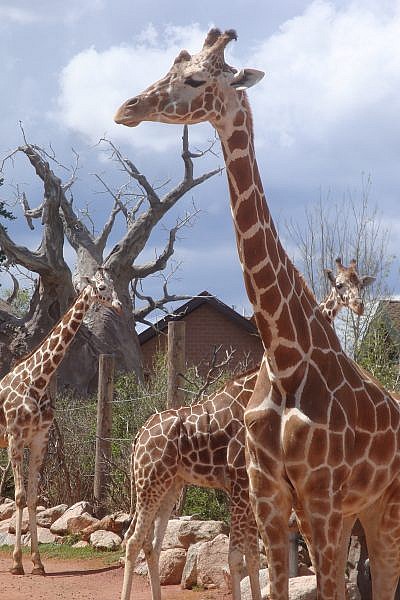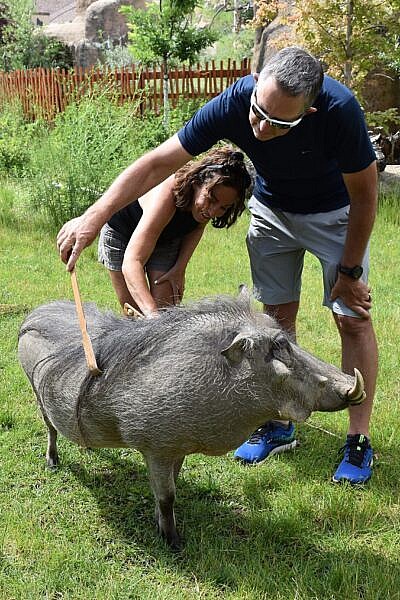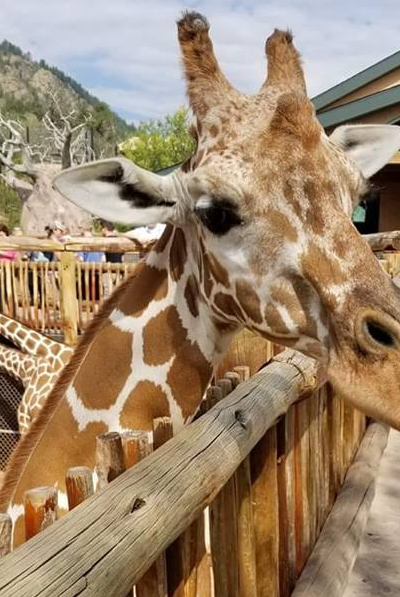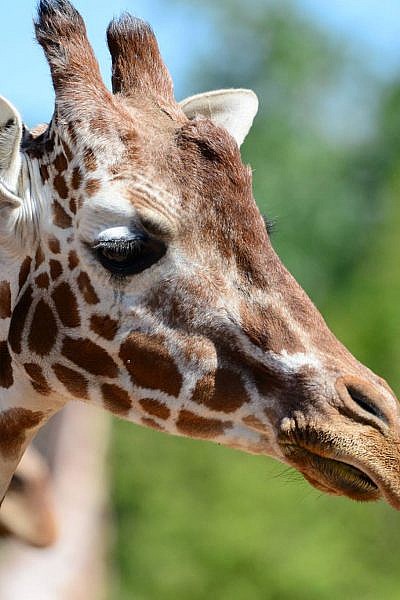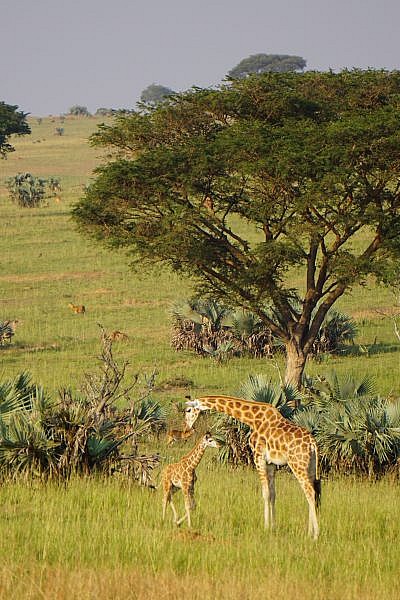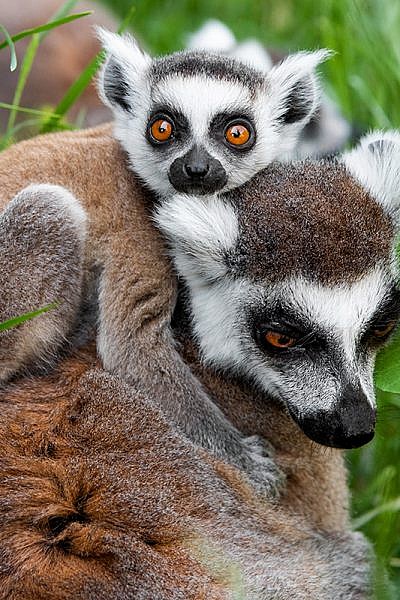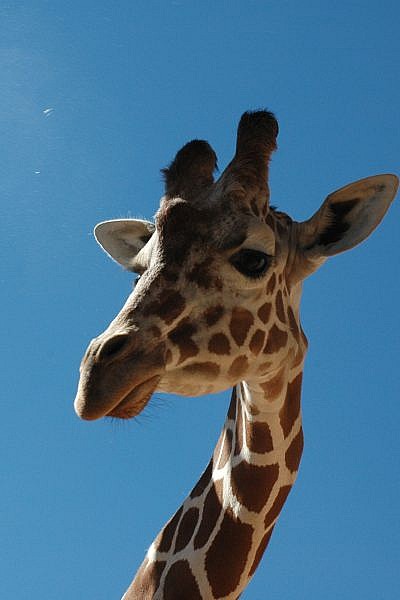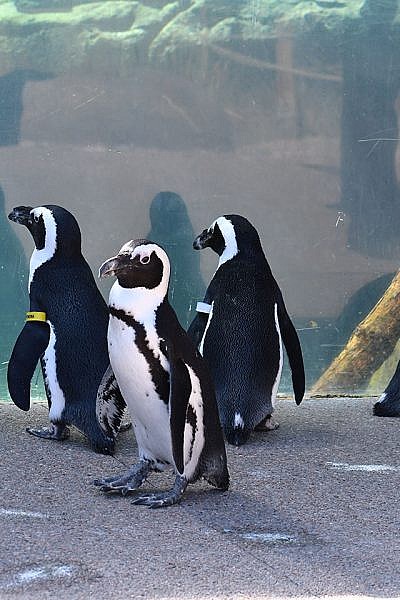— CMZoo invites public to guess birthdate of giraffe calf, expected this summer —
COLORADO SPRINGS, Colo. (May 21, 2019) – Msitu (muh-SEE’-too), a 10-year-old reticulated giraffe at Cheyenne Mountain Zoo, is pregnant, according to various test results and experts. CMZoo veterinary staff and giraffe keepers believe she is likely to have a calf in the next two months.
”We’re excited to share this news with our community and the huge group of giraffe fans around the world,” said Jason Bredahl, African Rift Valley animal care manager. “Msitu has given birth to two healthy calves, so we are cautiously optimistic about the viability of this calf.”
Cheyenne Mountain Zoo has confirmed the pregnancy with multiple screenings, blood tests and behavioral indicators. Msitu appears to be about 13 and a half months pregnant. Giraffe gestation isn’t an exact science. Giraffe pregnancies typically range between 14 and 15 months, which can make planning for the birth a bit of a guessing game. The Zoo’s records show that Msitu bred with bull, Khalid (kuh-LEED’), April 4, 2018. The 14-month mark would be June 4, 2019.
“Giraffe calves can be fragile, so we try to encourage people to be realistic about the risks while they enjoy the excitement of the hope we know giraffe calves bring to so many,” said Bredahl. “We’re optimistic that advances in medicine, like the availability of giraffe plasma and stem cell treatments, will help us navigate any medical needs the calf may have.”
CMZoo takes precautions for the well-being of mom and calf by providing a sand-floor stall for Msitu, separate from the rest of the herd. In anticipation of the birth, Msitu will be moved to a sand stall on Tuesday, May 28, 2019, which CMZoo staff anticipates is the earliest date Msitu could go into labor. During the day, when the giraffe go outside, she will remain with the herd. At night, she will move to the sand stall. The sand helps mom and baby in a few ways: by preventing injury to the calf upon the five-foot drop it encounters as it’s born, by providing a more absorbent substrate that helps prevent slips for the baby’s first steps, and by providing a cushion for the calf as it learns to walk and inevitably stumbles.
CMZoo is inviting the public to make its own guesses about when the newest member of the CMZoo giraffe herd will be born at cmzoo.org/guess. The person who guesses the correct hour, minute and date of birth will win a behind-the-scenes animal encounter with the CMZoo giraffe herd.
There are plans in the works to activate the well-known live-streaming “birth cam” on Tuesday, May 28, 2019, so giraffe fans worldwide can join in the excitement. Starting today at 2:30 p.m. MDT, CMZoo plans to provide weekly Facebook Live updates from the giraffe barn. During these weekly updates, giraffe keepers and veterinary experts will announce their own birthdate guesses, provide updates on Msitu’s pregnancy, the physical and behavioral changes she experiences as her due date approaches, and news on the baby’s first few weeks of life.
Msitu was born at CMZoo in February 2009. This would be Msitu’s third calf, after giving birth to Emy in August 2013 and to Rae in April 2017. Emy, a female, now lives at Peoria Zoo in Peoria, Ill. Two-year-old female Rae is the youngest member of the herd at Cheyenne Mountain Zoo, but a baby brother or sister may soon be changing that. CMZoo’s breeding program began in 1954. This calf’s birth would bring the number of reticulated giraffe in the CMZoo herd to sixteen.
Reticulated giraffe are endangered. There are just over 11,000 mature individuals in the wild, and that population trend is decreasing. In addition to keeping the species alive, by participating in a species survival plan and breeding a genetically diverse population in human care, CMZoo supports ongoing conservation efforts to help giraffe in the wild. To learn about the latest partnership effort to save West African giraffe in Niger, read about Operation Sahel Giraffe.
About Cheyenne Mountain Zoo
Cheyenne Mountain Zoological Society was founded in 1926. Today, Cheyenne Mountain Zoo, America’s mountain Zoo, offers comprehensive education programs, exciting conservation efforts and truly fantastic animal experiences. In 2019, Cheyenne Mountain Zoo was voted #6 Best Zoo in North America and CMZoo’s Rocky Mountain Wild was named #5 Best Zoo Exhibit in North America by USA TODAY 10Best Readers’ Choice Awards. It is Cheyenne Mountain Zoo’s goal to help guests fall in love with animals and nature, and take action to protect them. Of the 233 zoos and aquariums accredited by the Association of Zoos and Aquariums (AZA), Cheyenne Mountain Zoo is one of just a few operating without tax support. Cheyenne Mountain Zoo depends on admissions, membership dues, special event attendance and donations for funding.
